Vehicle Purchase Agreement Samples
-
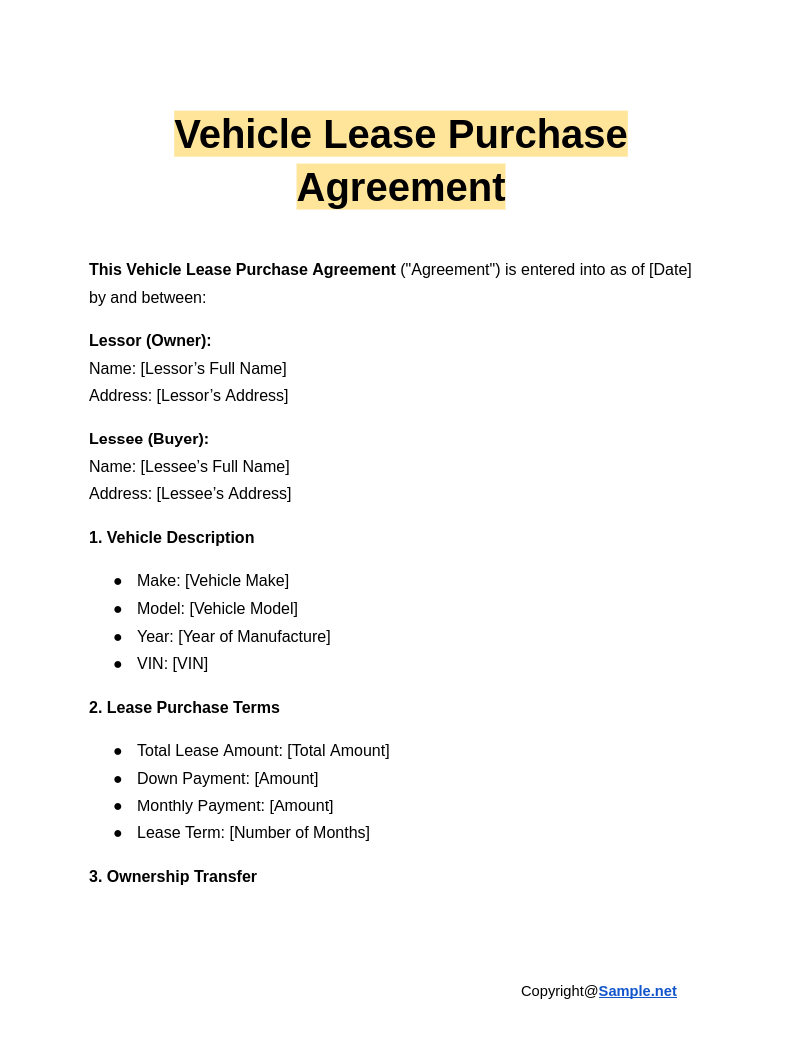
Vehicle Lease Purchase Agreement
download now -
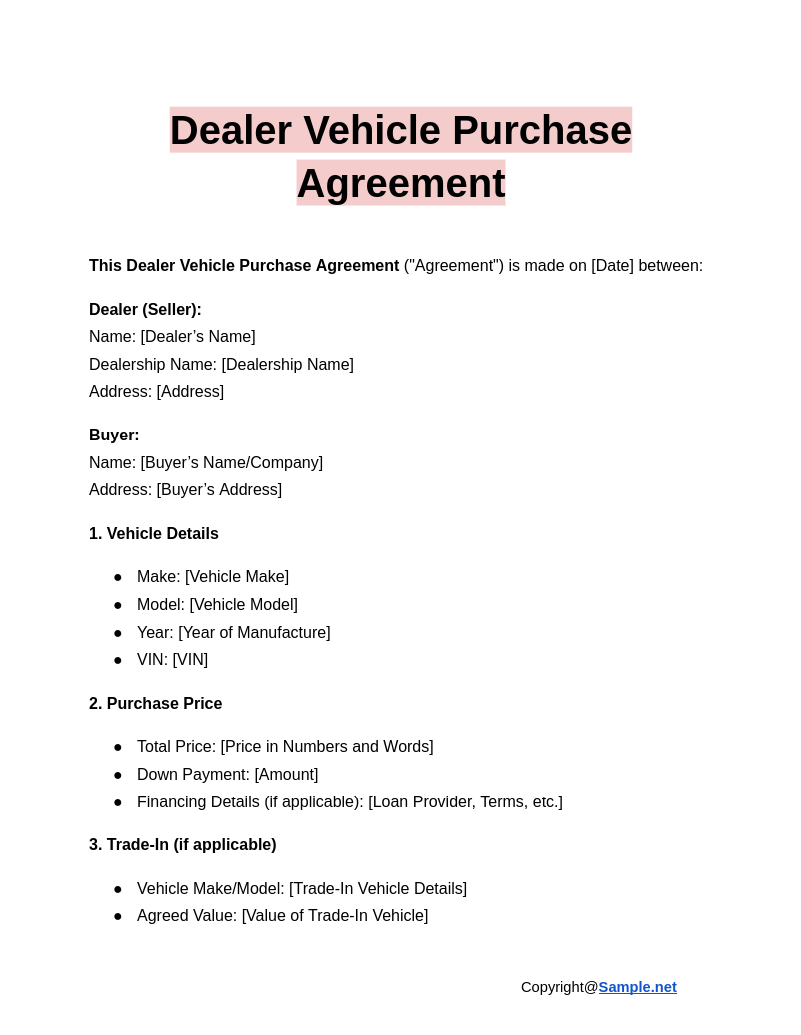
Dealer Vehicle Purchase Agreement
download now -
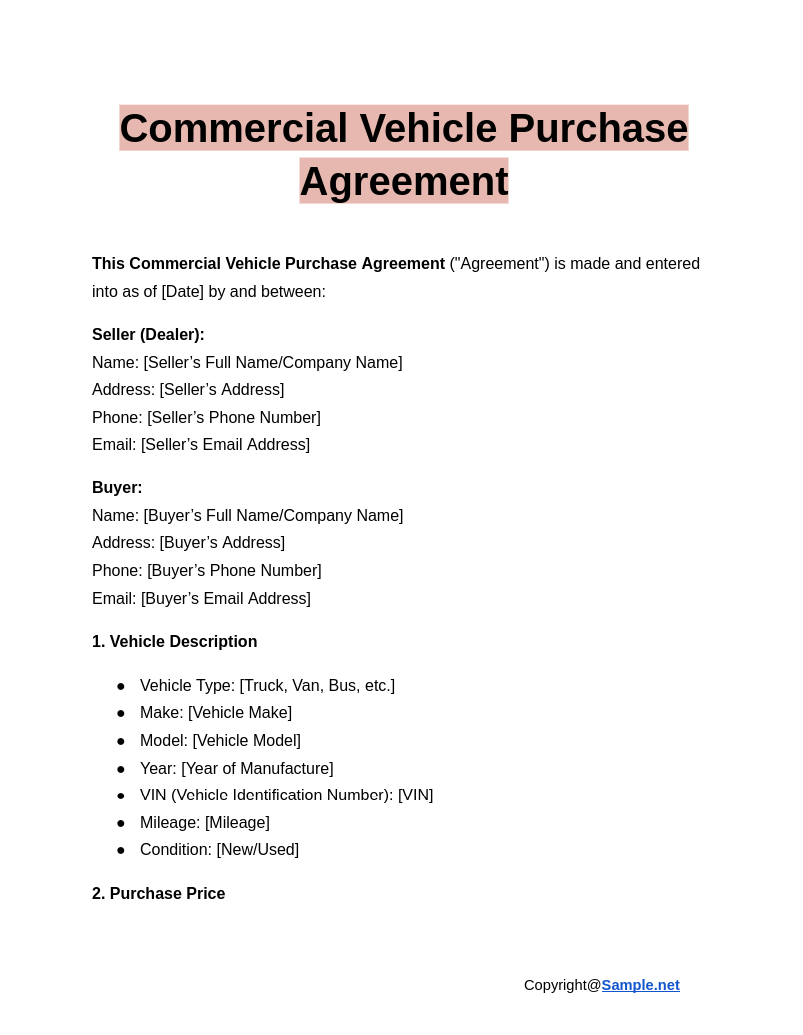
Commercial Vehicle Purchase Agreement
download now -
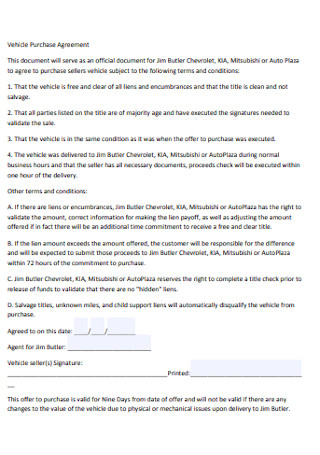
Sample Vehicle Purchase Agreement
download now -
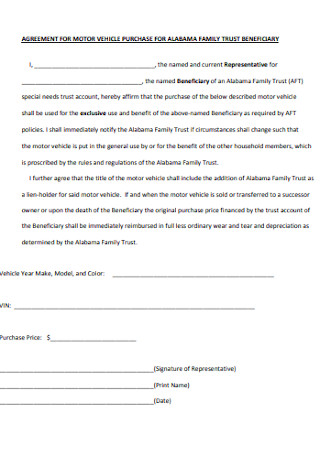
Family Vehicle Purchase Agreement
download now -
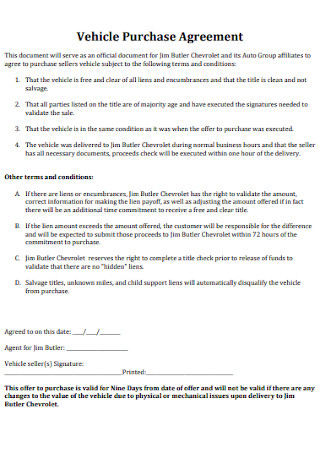
Vehicle Purchase Agreement Format
download now -

Sample Own Car Purchase Agreement
download now -
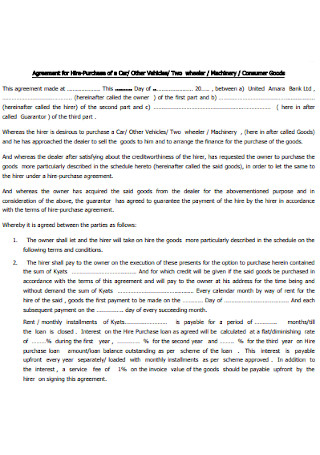
Agreement for Hire Car Purchase
download now -
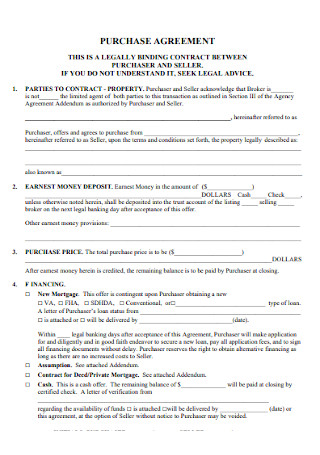
Legally Car Purchase Agreement
download now -
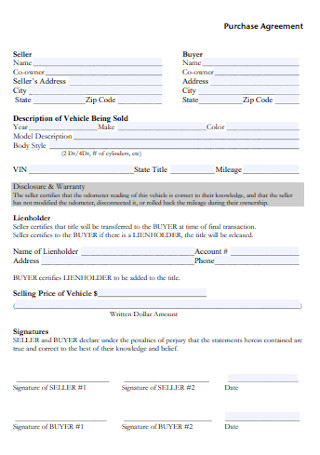
Standard Car Purchase Agreement
download now -
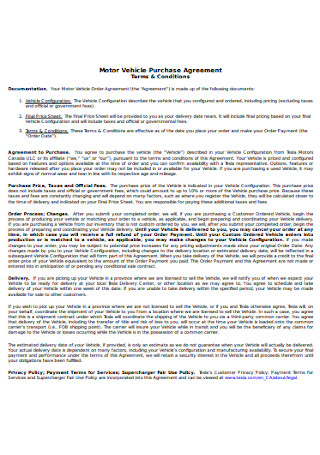
Motor Vehicle Purchase Agreement
download now -
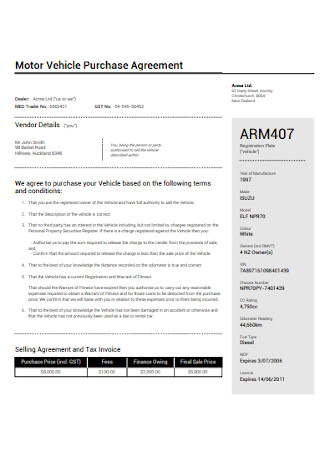
Basic Motor Vehicle Purchase Agreement
download now -

Formal Vehicle Purchase Agreement
download now -
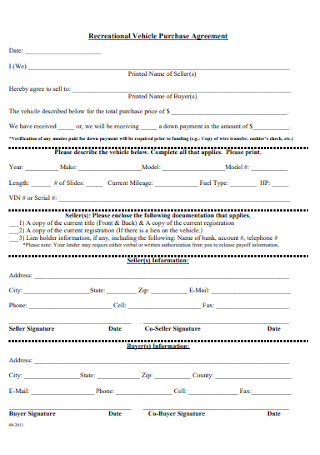
Recreational Vehicle Purchase Agreement
download now -
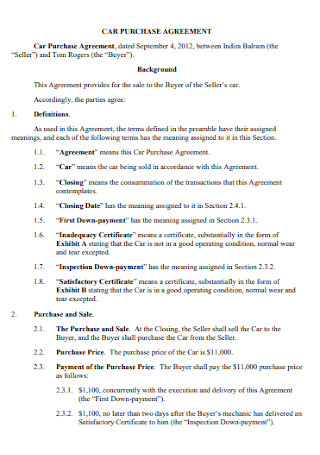
Sample Car Purchase Agreement
download now -
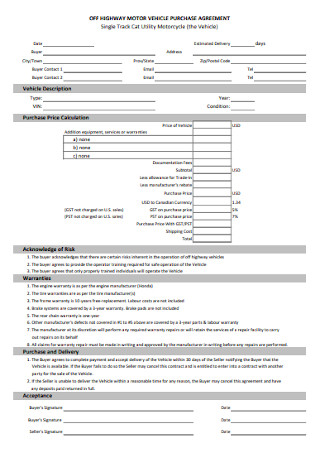
Highway Vehicle Purchase Agreement
download now -
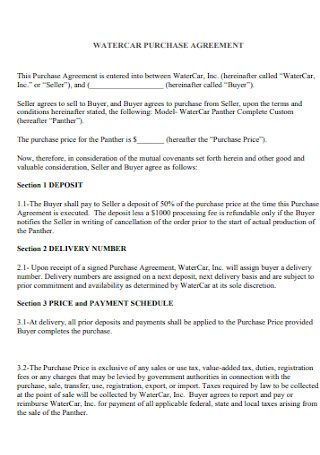
Water Car Purchase Agreement
download now -

Motor Vehicle Purchase Agreement
download now -
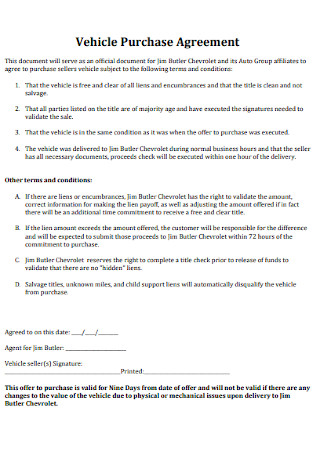
Basic Vehicle Purchase Agreement
download now -
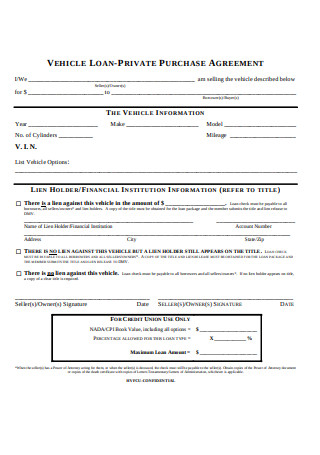
Vehicle Loan Purchase Agreement
download now -
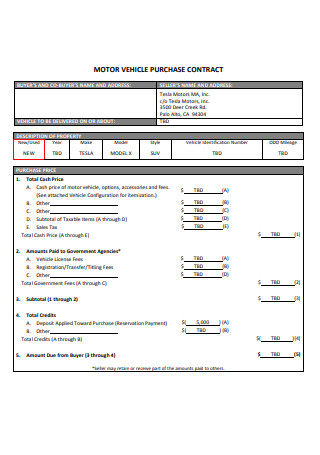
Motor Vehicle Purchase Agreement
download now -
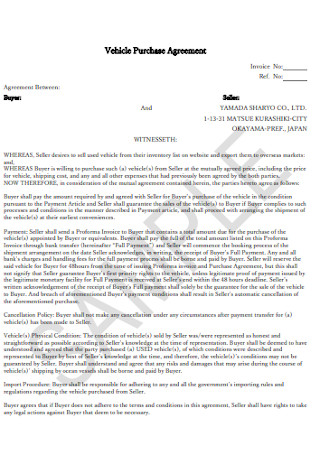
Standard Vehicle Purchase Agreement
download now -
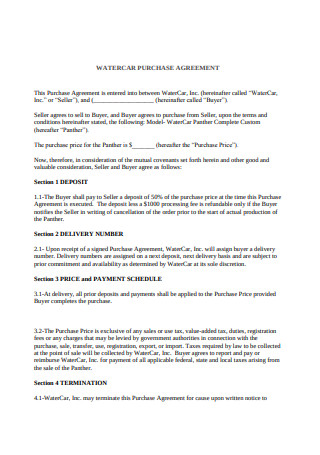
Formal Car Purchase Agreement
download now
FREE Vehicle Purchase Agreement s to Download
Vehicle Purchase Agreement Format
Vehicle Purchase Agreement Samples
What is a Vehicle Purchase Agreement?
Elements of a Vehicle Purchase Agreement
How to Create a Vehicle Purchase Agreement
FAQs
What’s the difference between a used car sales agreement and a vehicle purchase agreement?
What does a bill of sale show on a car?
Why do you need a purchase agreement form?
What details should be included in a Vehicle Purchase Agreement?
How does a Vehicle Purchase Agreement benefit the seller?
How do I make a Vehicle Purchase Agreement legally valid?
Is a Vehicle Purchase Agreement required for private sales?
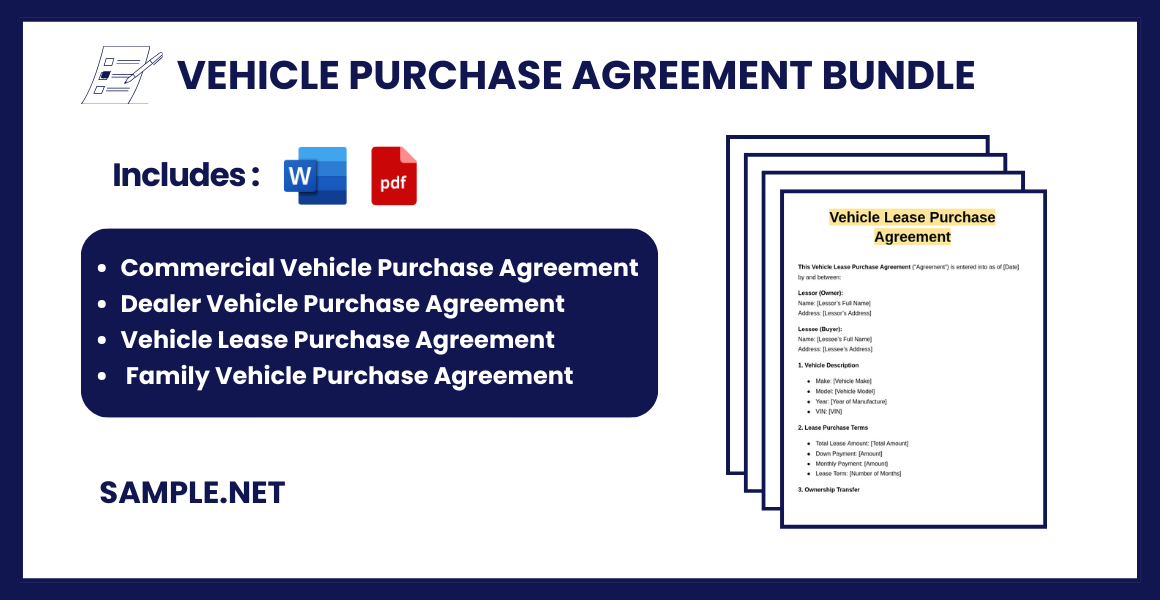
Download Vehicle Purchase Agreement Bundle
Vehicle Purchase Agreement Format
This Vehicle Purchase Agreement (“Agreement”) is made and entered into as of [Date] by and between:
Seller:
Name: [Seller’s Full Name]
Address: [Seller’s Address]
Phone: [Seller’s Phone Number]
Email: [Seller’s Email Address]
Buyer:
Name: [Buyer’s Full Name]
Address: [Buyer’s Address]
Phone: [Buyer’s Phone Number]
Email: [Buyer’s Email Address]
Vehicle Description:
Make: [Vehicle’s Make]
Model: [Vehicle’s Model]
Year: [Year of Manufacture]
VIN (Vehicle Identification Number): [VIN]
Mileage: [Mileage on Odometer]
1. Purchase Price
The Buyer agrees to purchase the vehicle for the total amount of [Amount in Numbers and Words, e.g., $10,000 (Ten Thousand Dollars)].
- Deposit Amount (if applicable): [Amount]
- Balance Due: [Amount]
- Payment Method: [e.g., Cash, Bank Transfer, Check]
2. Payment Terms
The Buyer agrees to make the payment in full by [Date] or as per the agreed schedule outlined below (if applicable):
- [Payment Schedule, if any]
3. Vehicle Condition
The Buyer acknowledges that the vehicle is sold “As-Is” with no warranties or guarantees, express or implied, except as otherwise stated in this Agreement.
The Seller confirms that the vehicle is free of any liens, loans, or encumbrances and that the Seller has the legal authority to sell the vehicle.
4. Delivery
The Seller agrees to transfer possession of the vehicle to the Buyer on or before [Delivery Date] at the following location: [Delivery Location].
5. Transfer of Ownership
The Seller agrees to provide the Buyer with the following documents upon receipt of full payment:
- Vehicle Title
- Bill of Sale
- [Any other relevant documents, e.g., Service Records, Warranty Papers]
The Buyer will be responsible for registering the vehicle in their name and paying all applicable taxes and fees.
6. Representations and Warranties
- The Seller represents that the vehicle details provided are accurate.
- The Buyer confirms that they have inspected the vehicle and are satisfied with its condition.
7. Default Clause
If the Buyer fails to make the payment as agreed, the Seller reserves the right to terminate this Agreement and retain any deposit made by the Buyer.
8. Governing Law
This Agreement shall be governed by and construed in accordance with the laws of [State/Country].
9. Entire Agreement
This Agreement constitutes the entire understanding between the parties and supersedes all prior discussions or agreements.
Signatures:
Seller’s Signature:
Name: [Seller’s Full Name]
Date: [Date]
Buyer’s Signature:
Name: [Buyer’s Full Name]
Date: [Date]
Witness (if applicable):
Name: [Witness Name]
Date: [Date]
What is a Vehicle Purchase Agreement?
A vehicle purchase agreement or also known as a vehicle contract is an agreement of both the seller and buyer of a vehicle. The agreement is mainly used for sales and purchase of a vehicle as well as the terms and conditions applied to the contract. When purchasing a vehicle from a private seller, a private vehicle sale agreement will be used as the contract of the vehicle. There are necessary forms that you should fill out as proof that the vehicle is no longer in the hands of the seller. Should there be any form of corrections stated on the agreement, a blank vehicle purchase agreement can be printed out.
Elements of a Vehicle Purchase Agreement
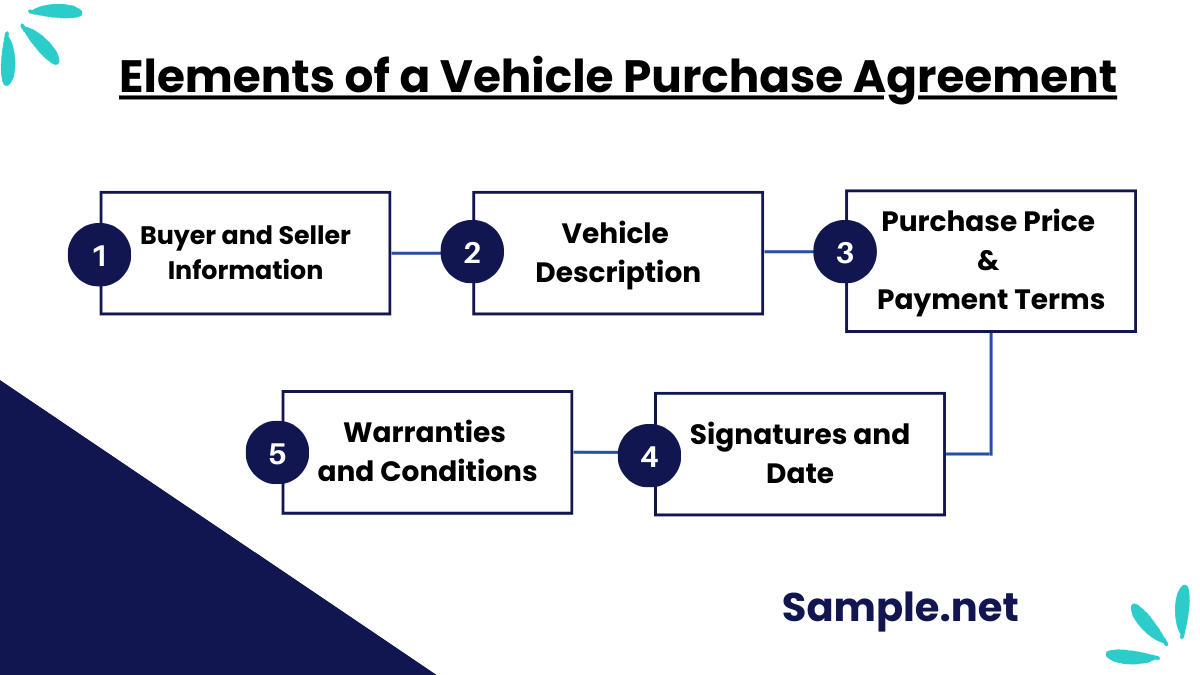
When purchasing a car, one must look in-depth at the agreement that needs to be signed by the buyer. There are some standard form contracts that may seem too overwhelming to read and understand, that is why looking closely into the elements of a vehicle purchase agreement is the best way to be aware of what the agreement is all about. Following that, stated below are the elements:
1. Buyer and Seller Information
The agreement should include the full names, addresses, and contact details of both the buyer and the seller. This ensures both parties are clearly identified and legally accountable.
2. Vehicle Description
Details such as the make, model, year, color, VIN (Vehicle Identification Number), and odometer reading should be included to identify the vehicle accurately. You can also see more on Car Sale Agreements.
3. Purchase Price and Payment Terms
The agreement must specify the agreed purchase price, payment method (cash, transfer, etc.), and any installment or financing terms, if applicable.
4. Warranties and Conditions
It should state whether the vehicle is sold “as-is” or with warranties, and if warranties are provided, their scope, duration, and limitations.
5. Signatures and Date
The agreement is legally binding only when signed by both parties. The date of signing must also be included to validate the agreement. You can also see more on Used Car Purchase Agreements.
How to Create a Vehicle Purchase Agreement
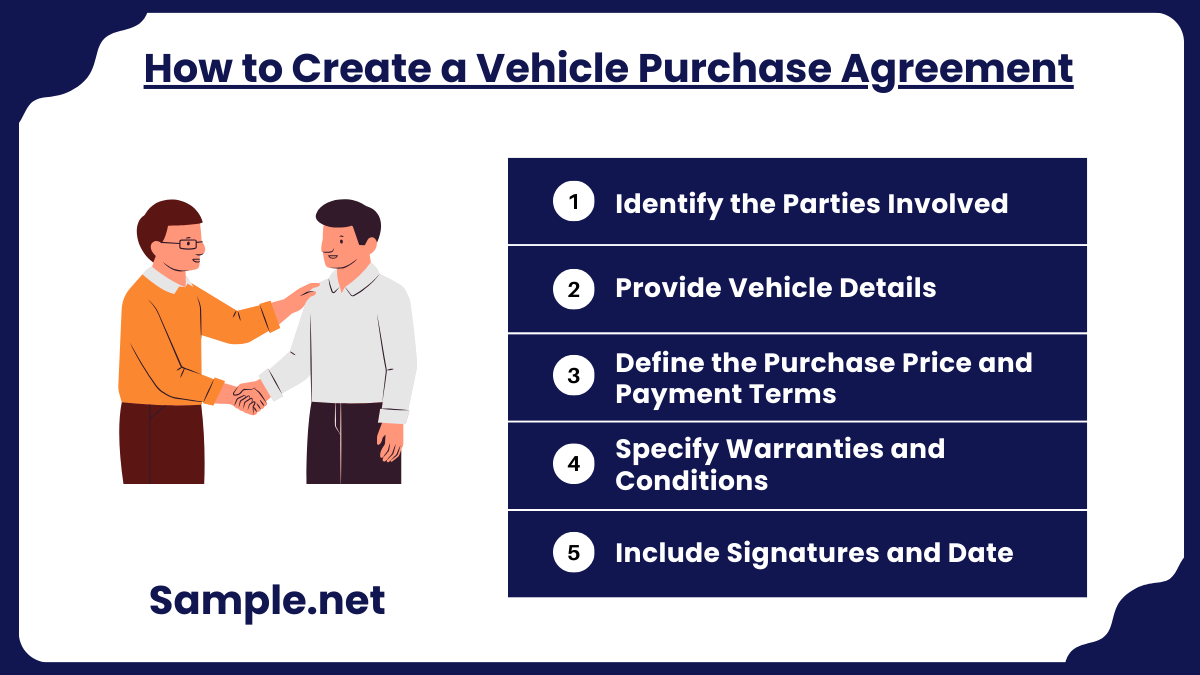
1. Identify the Parties Involved
Begin the agreement by clearly stating the names and contact details of both the buyer and the seller. This ensures there’s no ambiguity about the parties entering into the agreement. Include additional identifiers like driver’s license numbers to establish authenticity. Defining the parties is critical for legal enforceability. This step lays the foundation for a transparent and accountable transaction. You can also see more on Motor Vehicle Sale Agreement.
2. Provide Vehicle Details
Describe the vehicle in detail, including its make, model, year, color, and VIN (Vehicle Identification Number). Mention the odometer reading and any distinguishing features or defects. Accurate vehicle information is essential for ensuring the buyer knows exactly what they’re purchasing. This clarity helps prevent disputes and supports a smooth ownership transfer. Including these details also protects the seller from liability after the sale.
3. Define the Purchase Price and Payment Terms
Clearly state the agreed purchase price, including the currency and any applicable taxes. Outline the payment method, such as cash, bank transfer, or check, and specify the due date. If payments will be made in installments, include the schedule and terms for each installment. Transparency in payment terms avoids misunderstandings and ensures accountability. This step also strengthens the agreement’s enforceability. You can also see more on Auto Contracts.
4. Specify Warranties and Conditions
Indicate whether the vehicle is being sold “as-is” or with warranties. If warranties are provided, include details such as coverage duration and what parts or services are included. Mention any conditions, such as repairs the seller agrees to make before delivery. Providing this information ensures both parties are aligned on the vehicle’s condition and obligations. This clarity helps avoid disputes after the sale.
5. Include Signatures and Date
Conclude the agreement by including spaces for the signatures of both the buyer and the seller, along with the date. A signed document is legally binding and provides proof of mutual agreement. Both parties should review the agreement carefully before signing to ensure accuracy. This final step solidifies the agreement, making it enforceable in case of disputes. A signed document also serves as official proof of the transaction. You can also see more on Car Agreement.
FAQs
What’s the difference between a used car sales agreement and a vehicle purchase agreement?
There are a lot of people misunderstand the difference of both car sales agreement and vehicle purchase agreement. The used car sales agreement is a legal contract between a car seller and a car buyer. The vehicle purchase agreement is a document including all terms of purchasing a car.
What does a bill of sale show on a car?
It shows the proof that the seller has sold the vehicle or car to the buyer in which it provides a record of the vehicle’s sale price and date. You can also see more on Sale and Purchase Agreement.
Why do you need a purchase agreement form?
This is so that all the agreements made must be strictly followed, and to ensure that both parties have come to a consensus regarding the sale, which is why there are agreement forms to make sure of that.
What details should be included in a Vehicle Purchase Agreement?
It should include the buyer’s and seller’s information, vehicle description (make, model, VIN, odometer reading), purchase price, payment terms, and any warranties. Clear details ensure the agreement is comprehensive and enforceable, avoiding potential disputes. You can also see more on Car Purchase Agreement.
How does a Vehicle Purchase Agreement benefit the seller?
For sellers, it documents the sale terms, absolving them of liability once the vehicle is sold. It ensures they receive full payment and provides legal protection against future claims from the buyer.
How do I make a Vehicle Purchase Agreement legally valid?
Ensure it includes all necessary details, is signed by both parties, and adheres to local laws. Consulting a legal professional can add an extra layer of protection.
Is a Vehicle Purchase Agreement required for private sales?
While not legally mandatory in some regions, it’s highly recommended for private sales. It provides clarity, legal protection, and proof of the transaction, especially for registration purposes. You can also see more on Bill of Sale Contracts.
